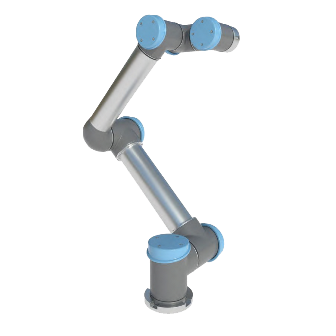Industrial robots are not new to welding automation. They have been used for decades for the automation of welding applications. However, now collaborative robots are being used for welding applications in addition to traditional six-axis robots such as the FANUC Arcmate 120ic. Collaborative robots have been mainly used in the past for material handling and assembly tasks, but recently cobot technology has expanded to welding operations.
What is a Collaborative Robot?
A collaborative robot or cobot is designed to operate directly alongside workers without the need for any safety barriers. The elimination of barriers allows collaborative robots to assist workers. They are typically light weight and small, allowing for easy interactions with humans. Many of the top robotic brands have entered the collaborative robot market. FANUC’s CR series features several collaborative robots including the CR-7ia.What Welding Applications can Cobots Automate?
Since collaborative robots feature light payload capacities, they are ideal for automating arc welding applications. These include MIG, TIG, and plasma welding. In addition to arc welding, cobots can also automate laser welding processes.Why Automate Welding with a Collaborative Robot?
While the Motoman MA1440 along with other traditional welding robots are still the most common for welding automation, there are some instances in which a cobot will be a better fit. Manufacturers with a low volume and high mix of parts were previously not good candidates for traditional welding robots. Collaborative robots are typically less expensive than other types of industrial robots. They are also easier to operate with their intuitive operation system. This allows manufacturers to justify the cost of automation for even low volumes. Their quick programming allows for easy adjustments to part changes.The intuitive operation system of collaborative robots features hand guidance programming. Users can quickly program the Universal UR10 for welding by manually guiding its arm through the application steps. This allows workers of any technical experience level to operate and program a cobot. Cobots can easily be reprogrammed allowing companies to respond quickly to customer requests.
Collaborative robots are designed with rounded edges and built-in sensors to allow for their safe operation around humans. This eliminates the need for traditional safeguarding equipment required for conventional robotic welding systems. This can lower the overall cost of automating a welding operation since less equipment is needed for a cobot.
Eliminating additional safety equipment plus the compact footprint of collaborative robots allows manufacturers to automate without having to sacrifice much floorspace. This makes cobots ideal options for those with small to medium sized factories in which there is not much space to spare. It also makes them easier to integrate along production lines as well as provide access to welds in narrow spaces.
Lastly, collaborative robots can significantly increase productivity by assisting welders. Cobots can take over repetitive welding tasks, freeing welders to focus on more critical aspects of a production. They also provide a faster and steadier arm for welds with long seams, that can be more time consuming when done manually. A cobot is also available to work without breaks, proving to be a reliable assistant to your welders.
Robots Done Right is the place to start when it comes to used robots. Contact us if you are interested in buying or selling your used robot.
